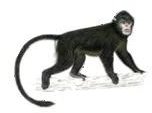How Many Undiscovered Species are There Still to Find?
Scientists had identified 1,941,939 species by the year 2010, according to the International Institute for Species Exploration. Discovery News estimates taxonomists, or scientists who count and categorize species, discover an average of 15,000 new species each year. Almost all scientists agree taxonomists have not scratched the surface when it comes to identifying all of the creatures on land and in the sea.
Camilo Mora, director of the Mora Lab at the University of Hawaii at Manoa, thinks that taxonomists have not yet discovered 86 percent of the species on land and 91 percent of species living in the ocean. More specifically, Mora and his team of researchers believe there are:
- 7.77 million more species of animals
- 298,000 more species of plants
- 611,000 more species of fungi
- 6,400 more species of protozoa
- 27,500 more species of chromists
The Smithsonian National Museum of Natural History estimates the number of undiscovered species in the ocean to be somewhere between a few hundred thousand to more than 10 million. The number of newly discovered ocean species has dropped off drastically in recent years, leading others to believe not many more new species exist there.
How the Numers are Calculated
Until recently, it had been difficult to calculate the number of identified species and estimate the number of undiscovered species because no one had tried to categorize all the mostly lost and forgotten papers, monographs, and reports that describe new species. Computer databases and other technologies now help groups like the World Register of Marine Species, or WoRMS, to create a catalog of discovered species. Taxonomists also use technology and scientific theories to estimate the number of undiscovered species on the planet.
Some taxonomists use the species-area curve that says the number of species increases with the size of the terrain. These researchers look for the accumulation of certain species that can help them judge how many creatures live in an area of a particular size – the size of an ocean, perhaps. The inherent problem with this approach is that different prediction methods used by individual scientists can produce a variety of results.
Others use a theoretical approach that says a scientist can estimate the number of undiscovered species by looking at the rate of species discoveries: a large number of discoveries mean there are many unidentified species while few discoveries mean there are not many new species under the sun or the sea.
**
Recent Discoveries
Taxonomists first described the Lilliputian violet in 2012, named the race of little people on the island of Lilliput in Jonathan Swift’s Gulliver’s Travels because of the flower’s diminutive size. That same year, scientists first described Rhinopithecus strykeri, a snub-nosed monkey that sneezes when it rains, and the only orchid to bloom at night - Bulbophyllum nocturnum.
Calculating the number of undiscovered species will likely become easier as taxonomists develop new tools for identifying and categorizing new discoveries. Google Earth even promises to lend a hand – it helped scientists discover an entire new forest in Mozambique, packed full of undiscovered species in 2009.
References
- http://news.discovery.com/animals/new-species-111213.htm
- http://ocean.si.edu/blog/one-fish-two-fish-estimating-undiscovered-species
- http://www.sciencedaily.com/releases/2009/01/090131125244.htm
- http://www.plosbiology.org/article/info%3Adoi%2F10.1371%2Fjournal.pbio.1001127
- Drawing by Rasmus Liedigk, Mouyu Yang, Nina G. Jablonski, Frank Momberg, Thomas Geissmann, Ngwe Lwin, Tony Htin Hla, Zhijin Liu, Bruce Wong, Li Ming, Long Yongcheng, Ya-Ping Zhang, Tilo Nadler, Dietmar Zinner, Christian Roos [CC-BY-2.5 (http://creativecommons.org/licenses/by/2.5)], via Wikimedia Commons
- http://timgostony.com/iisetemp/SOS2011_FINALr.pdf
